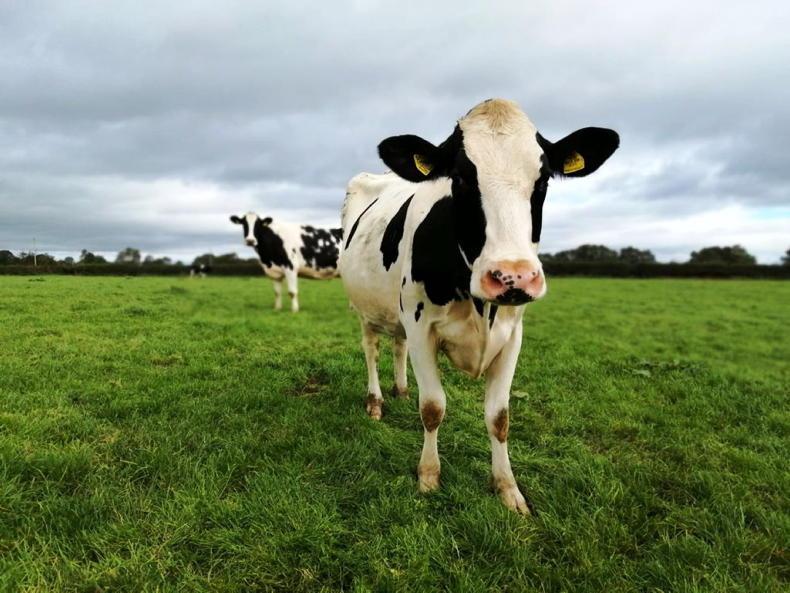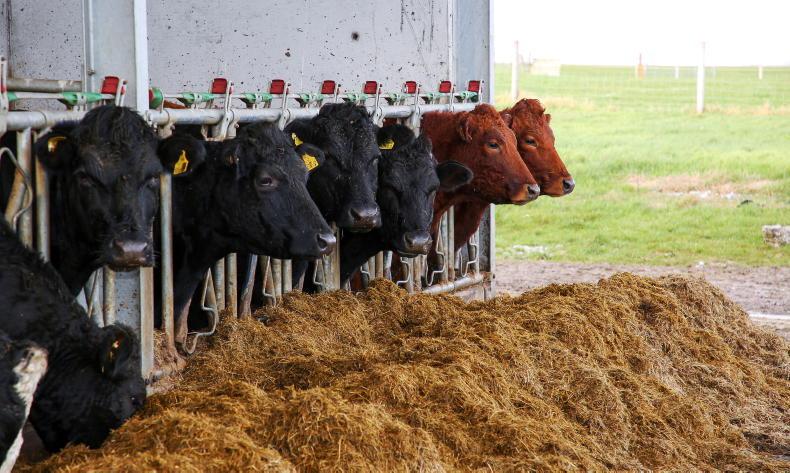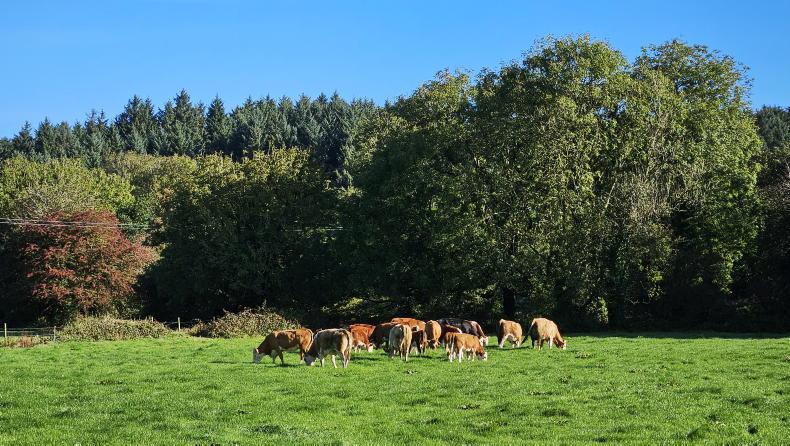This week has seen our calving season rapidly gain momentum.
Even with good breeding records, deciding when to move an animal from the dry cow facilities to the calving pens can often be more due to good fortune than judgement.
I have found this to be particularly true with those cows that are in-calf to high-DBI (dairy beef index) Angus bulls which are currently calving seven to 10 days earlier than their projected calving dates.
This means that I also need to pay close attention to make sure that milk from these cows is kept out of the bulk tank long enough to meet dry cow therapy antibiotic withdrawal periods.
With a steady supply of bundles of bovine joy, it is essential that calves are tagged within hours of birth to ensure that they are correctly allocated to their mother.
To overcome any perceived inaccuracies in my calf registration, I now use my phone to photograph each dun and white calf as soon as it is tagged
Since we started our Fleckvieh crossbreeding experiment, I have found that in certain cases calves born with a beautiful dun and white coat will, over time, turn into a more mundane black and white. Others will keep their more distinctive colouring.
To overcome any perceived inaccuracies in my calf registration, I now use my phone to photograph each dun and white calf as soon as it is tagged. Therefore if this calf is shown to have chameleon qualities I can verify that its registered colour was correct at the time.
you may be forgiven for thinking my passion for cattle breeding has gone a bit too far
If you didn’t know that, and looked on my phone camera roll to see nothing but photos of newborn calves you may be forgiven for thinking my passion for cattle breeding has gone a bit too far.
Deteriorated
As we enter October, weather conditions have deteriorated significantly, although there is still an abundance of grass on the farm.
With the exception of those that have recently calved, cows are still at grass day and night. Careful grazing management with the use of laneways and back fences is essential.
Since graduating from Greenmount and returning home to farm in 2009, this has been my most enjoyable farming year yet
Youngstock and beef cattle are still surviving on grazed grass alone, although we are paying careful attention to them as it is all too easy for stock of any age to decline at this time of year.
Since graduating from Greenmount and returning home to farm in 2009, this has been my most enjoyable farming year yet, and that is primarily due to the weather.
It has made grassland management and consequently stock management much easier.
Initially we were able to carry out drainage work in perfect conditions in April which resulted in a transformation of land performance.
The summer yielded a crop of quality silage, and with the exception of the cold snap in May and the drought of July, the grazing season provided a steady supply of grass which was excellently utilised and easily converted into milk.
It is also the first year that I can remember when our cows have been at grass both day and night without exception since the end of April, and the first year we have been baling surplus cow grazing in September.
Barley
It is the same for our modest acreage of spring barley.
Although the window of opportunity wasn’t particularly long, it did give enough time to mobilise our classic fleet and safely gather in the crop at approximately 2.5t/acre and straw which yielded on average 100 small square bales per acre.
The conditions have since remained good enough to allow us to spray the barley stubble with glyphosate and direct-drill grass seed five days later. It has also now received a thin coat of slurry to aid plant establishment.
I know that individual circumstances can vary drastically, but on this farm, 2021 is a year to remember.
Read more
In search of a stray Galloway bull
Carrying on after a case of COVID-19
This week has seen our calving season rapidly gain momentum.
Even with good breeding records, deciding when to move an animal from the dry cow facilities to the calving pens can often be more due to good fortune than judgement.
I have found this to be particularly true with those cows that are in-calf to high-DBI (dairy beef index) Angus bulls which are currently calving seven to 10 days earlier than their projected calving dates.
This means that I also need to pay close attention to make sure that milk from these cows is kept out of the bulk tank long enough to meet dry cow therapy antibiotic withdrawal periods.
With a steady supply of bundles of bovine joy, it is essential that calves are tagged within hours of birth to ensure that they are correctly allocated to their mother.
To overcome any perceived inaccuracies in my calf registration, I now use my phone to photograph each dun and white calf as soon as it is tagged
Since we started our Fleckvieh crossbreeding experiment, I have found that in certain cases calves born with a beautiful dun and white coat will, over time, turn into a more mundane black and white. Others will keep their more distinctive colouring.
To overcome any perceived inaccuracies in my calf registration, I now use my phone to photograph each dun and white calf as soon as it is tagged. Therefore if this calf is shown to have chameleon qualities I can verify that its registered colour was correct at the time.
you may be forgiven for thinking my passion for cattle breeding has gone a bit too far
If you didn’t know that, and looked on my phone camera roll to see nothing but photos of newborn calves you may be forgiven for thinking my passion for cattle breeding has gone a bit too far.
Deteriorated
As we enter October, weather conditions have deteriorated significantly, although there is still an abundance of grass on the farm.
With the exception of those that have recently calved, cows are still at grass day and night. Careful grazing management with the use of laneways and back fences is essential.
Since graduating from Greenmount and returning home to farm in 2009, this has been my most enjoyable farming year yet
Youngstock and beef cattle are still surviving on grazed grass alone, although we are paying careful attention to them as it is all too easy for stock of any age to decline at this time of year.
Since graduating from Greenmount and returning home to farm in 2009, this has been my most enjoyable farming year yet, and that is primarily due to the weather.
It has made grassland management and consequently stock management much easier.
Initially we were able to carry out drainage work in perfect conditions in April which resulted in a transformation of land performance.
The summer yielded a crop of quality silage, and with the exception of the cold snap in May and the drought of July, the grazing season provided a steady supply of grass which was excellently utilised and easily converted into milk.
It is also the first year that I can remember when our cows have been at grass both day and night without exception since the end of April, and the first year we have been baling surplus cow grazing in September.
Barley
It is the same for our modest acreage of spring barley.
Although the window of opportunity wasn’t particularly long, it did give enough time to mobilise our classic fleet and safely gather in the crop at approximately 2.5t/acre and straw which yielded on average 100 small square bales per acre.
The conditions have since remained good enough to allow us to spray the barley stubble with glyphosate and direct-drill grass seed five days later. It has also now received a thin coat of slurry to aid plant establishment.
I know that individual circumstances can vary drastically, but on this farm, 2021 is a year to remember.
Read more
In search of a stray Galloway bull
Carrying on after a case of COVID-19










SHARING OPTIONS